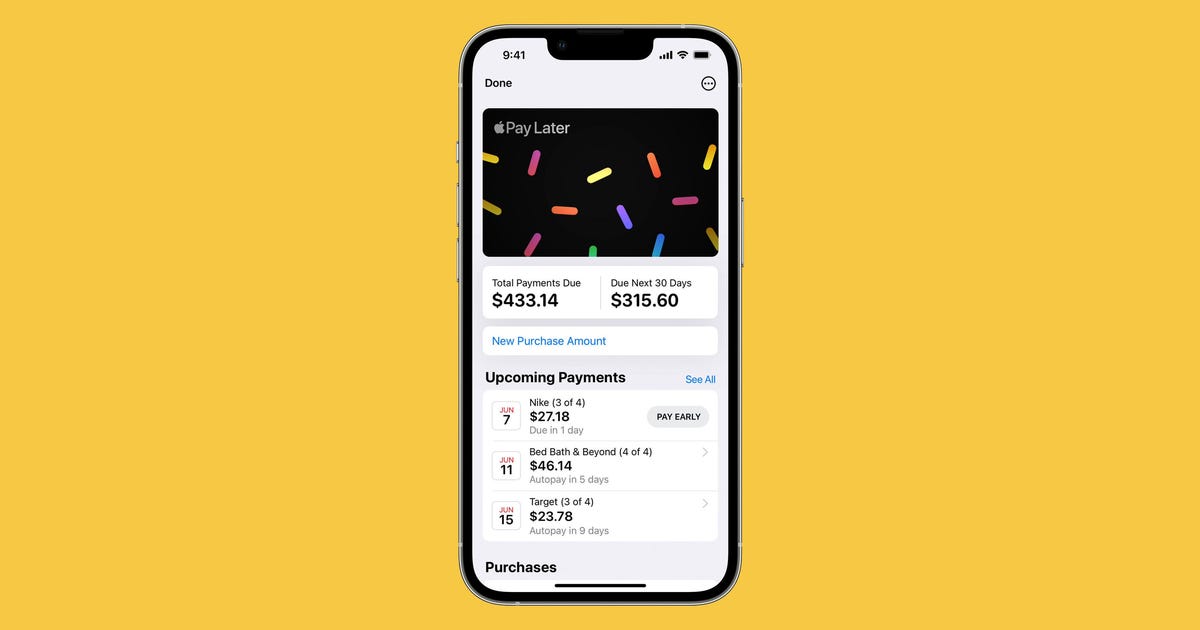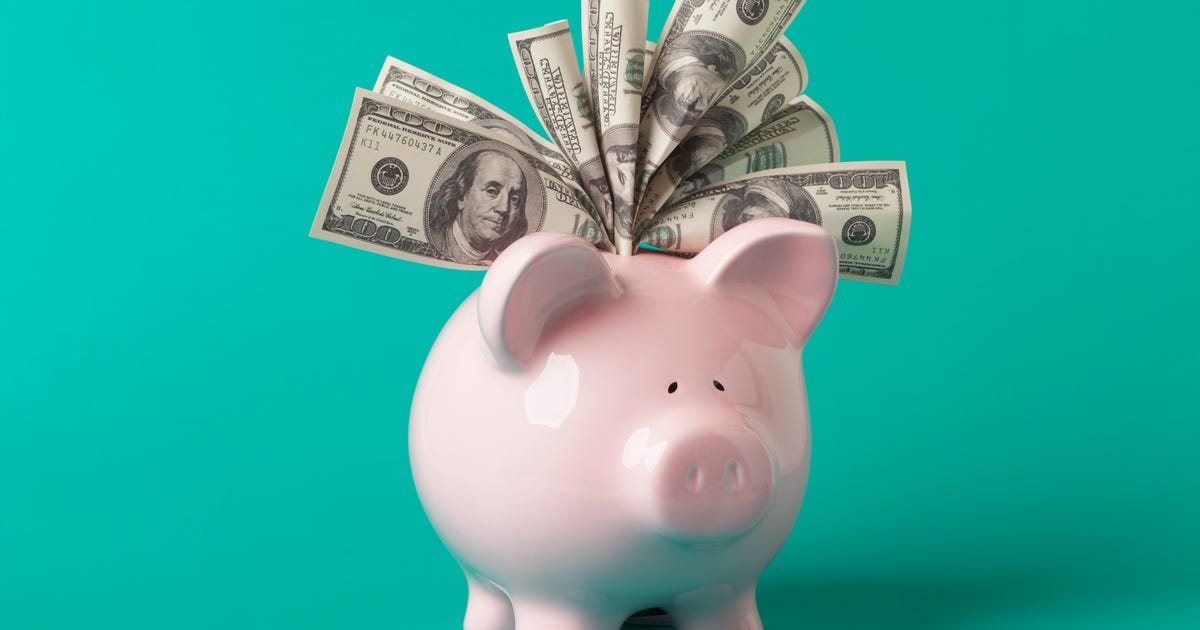
APR vs. interest rate: What are the differences?
When shopping for a mortgage, car loan or new credit card, you may be presented with an interest rate and an annual percentage rate -- each of which will show you the cost of the loan in a different way. Like with so many seemingly mundane financial details, the real-world implications of these two rates can add up to hundreds or thousands of dollars over time.
Knowing the crucial differences between the interest rate and APR will help you calculate your monthly payment, understand the total cost of a loan and, ultimately, identify the best deal. Here's why understanding how an APR impacts your loan -- especially in the context of a mortgage that can run into the hundreds of thousands of dollars -- is so important.
How interest rates work
An interest rate is the percentage of a loan you'll pay to the lender in exchange for borrowing money. With a mortgage, when you begin making monthly payments, interest is included in your payment. The actual rate you'll pay for a loan depends on a few factors.
Market trends
Interest rates are set by the Federal Open Market Committee (often referred to as "The Fed"), which is made up of representatives from the Federal Reserve. The Fed meets several times per year to discuss the state of the economy and adjust interest rates as needed. The Committee's job is to maintain healthy economic growth while keeping inflation at bay.
Currently, interest rates are at historic lows -- due in part to the coronavirus pandemic, but continuing a trend originating during the 2008 financial crisis. At the end of April 2021, the Fed decided to keep rates close to zero to keep financing as affordable as possible for businesses and individuals during this tough economic time.
Credit score
Your credit score also impacts the interest rate you're offered. Advertised interest rates are usually reserved for borrowers with excellent credit -- traditionally defined as a score of 760 or higher -- and may also include a rate discount for setting up automatic loan payments.
Individuals with a lower credit score (under 760) are usually offered higher interest rates to mitigate the lender's risk of losing money if the borrower defaults on their loan. A low credit score, a history of late payments or collection accounts can impact whether you're approved for a loan. And if you are approved, you'll likely be charged a higher interest rate than a borrower with good-to-excellent credit.
Most lenders recommend cleaning up your credit and finances before applying for a loan. Improving your credit score by paying down your debts and creating a history of on-time payments could save you thousands of dollars in interest on a mortgage.
For example, look at how a 0.5% difference in interest rates can change the total cost of a $300,000 loan over 30 years.
- Interest paid at 3.00%: $155,332.36
- Interest paid at 3.50%: $184,968.26
Though the numbers may be smaller for a credit card or car loan, modest differences in interest rates can add up over the years.
Other costs
In addition to your interest rate, there are other costs included in your home loan. The interest rate may be the most significant factor, but annual fees, closing costs and additional charges may add to the cost of borrowing money.
How annual percentage rate works
The annual percentage rate is typically higher than an interest rate because it includes all the costs of borrowing money. Some fees that may be incorporated into the APR are:
- Points (one point is equal to 1% of the loan)
- Loan-processing and administrative fees
- Underwriting fee
- Escrow or loan settlement fee
- Private mortgage insurance (for mortgages)
- Document-preparation fee
- Annual fee (for credit cards)
While you may not always be able to negotiate your interest rate, you may be able to negotiate some of the fees included in your APR. The fewer the charges associated with the loan, the lower the APR.
Lenders must legally display their APR
The Truth in Lending Act was enacted in 1968 to make credit cards and loans more transparent, so buyers know what they're comparing -- and signing up for. One of the Act's requirements is that lenders must report APR, which reflects the extra costs of borrowing more accurately. You'll find the APR advertised alongside the interest rate. You can also find it in the Loan Estimate. The interest rate is usually shown on page one under "Loan Terms," and the APR usually appears on page three under the "Comparisons" section.
Fixed vs. variable APR
A fixed APR does not change. But a variable rate APR can fluctuate based on index rate changes, such as the Wall Street Journal's published prime rate. Some variable APRs -- penalty APRs -- can also change as a penalty if you make late payments.
How loan terms impact APR
The loan terms you choose will also impact the amount of interest and other fees you'll pay over the lifetime of your mortgage. You'll typically be able to make lower monthly payments and pay less monthly interest and fees with a 30-year mortgage than with a 15-year home loan. But, since you'll be making this payment for twice the amount of time, you'll ultimately pay more in interest. Generally, you'll pay less interest and fees overall with a shorter mortgage term.
Here's an example of how a loan term can impact your APR, based on a $250,000 home loan.
How loan term impacts APR
| | Option A: 3.25% interest rate, 15 years | Option B: 3.25% interest rate, 30 years | Option C: 3.75% interest rate, 15 years | Option D: 3.75% interest rate, 30 years |
|---|---|---|---|---|
| Cost of points and fees | $2,500 | $2,500 | $1,200 | $1,200 |
| APR | 3.43% | 3.35% | 3.84% | 3.80% |
| Monthly payment | $1,405.34 | $870.41 | $1,454.44 | $926.23 |
| Total interest paid | $52,960.76 | $113,348.55 | $61,800.08 | $133,443.23 |
In this example, Option B has the lowest APR -- 3.350% for a 30-year loan term -- and may seem like the best choice at first glance. The monthly payment is the smallest at $870.41, over $500 cheaper per month than Option A. However, because Option B is spread out across 30 years, you'll pay more than double the amount of interest than you would with Option A.
Interest rate vs. APR: Which one should you use when mortgage shopping?
Bottom line: Interest rates are only part of the picture. When you're shopping for a mortgage or any other type of loan, comparing APR rates across lenders will give you the most accurate and complete view of your costs. A lender could advertise the lowest interest rate yet charge a higher APR, costing you more money in interest in the long term.
Source
Tags:
- Apr Vs Interest Rate What Are The Differences Between Dna
- Apr Vs Interest Rate What Are The Differences Between Plant
- Apr Vs Interest Rate What Are The Differences And Similarities
- Apr Vs Interest Rate What Are The Differences Between Prokaryotes
- Apr Vs Interest Rate What Is It
- Apr Vs Interest Rate What Are They Doing
- Apr Vs Interest Rate What Is Apr
- Apr Vs Interest Rate Difference
- Apr Vs Interest Rate Definition
- Apr Vs Interest Rate Calculator
- Apr Vs Rayon Spo rt
- Apr Vs Apy Calculator


